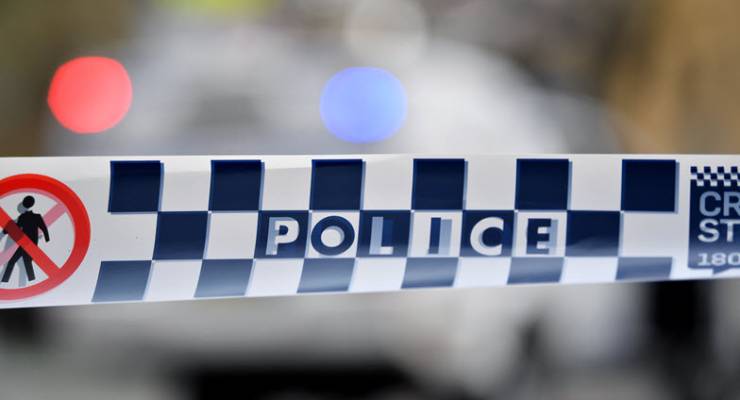
As more stories emerge of alleged police heavy-handedness and insensitivities across Australia, a reoccurring question is one of recourse. What can be done about incidents where people believe they have been mistreated by police? What are their options, and can justice be served?
Police heavy-handedness
The stories of alleged police overreaction are piling up in 2019.
Over the weekend, a video was posted on Twitter showing 10 NSW Police officers and four stadium security guards hovering around a man and his daughter, who has Down’s syndrome, at a Sydney FC game.
The father, Roy Carroll, was trying to take his daughter to the nearest disabled bathroom, but according to security guards he had broken “seating protocol”. Carroll and his family, avid soccer fans watching Sydney FC and Melbourne Victory, were removed from the stadium by armed police after arguing with security.
Carroll wrote on Twitter his special needs daughter was “traumatised” and he had to “console crying girls”. One video shows his daughter looking up at her father and the police with fear. “Myself and my family were surrounded by a phalanx of armed police, with officers holding their hand to gun holsters,” he said.
The police version of events alleged Carroll “was spoken to by security about seating protocols” and “despite repeated requests by security, was unwilling to cooperate”. Police were called and Carroll “was spoken to by officers” before being escorted from the stadium with his family.
Next in Queensland, an inquiry found that police strip-searched Indigenous youths and charged them for trivial offences such as breaking a coffee cup.
Meanwhile, in Victoria, police are being investigated for badly injuring a man in a wrongful house raid on Saturday night.
It is understood that heavily armed police officers raided an apartment connected to LGBT bookshop Hares and Hyenas in Fitzroy. In a case of mistaken identity, police arrested Nik Dimopoulos, seriously fracturing his arm as they arrested him. Dimopoulos has since had to undergo surgery and may not recover use of his arm.
How can people affected complain?
Complaints processes against police differ from state to state. A NSW Police spokesman told Crikey that “there are several options open to people who are unhappy with their interactions with police” but left it at that.
Complaints can be written directly to NSW Police, the NSW Ombudsman, the Police Integrity Commission, or the Law Enforcement Conduct Commission — an independent statutory body that investigates serious misconduct complaints against officers.
For example, Carroll decides to make a complaint he could potentially receive an apology from the force, but only after all facts have been gathered and all lines of enquiry have been exhausted, according to police. Resulting actions can be remedial or criminal and in some cases can result in the dismissal of a police force member.
Complaints can be made even if the police actions were not necessarily unlawful. The public can write in about incidents they find to be “unreasonable, unjust, oppressive or improperly discriminatory in its effect”.
For example, the NSW Police force was recently in trouble for the racist vilification of Palestinians and Arabs in a counter-terrorism training video. They used keffiyehs — a traditional black and white chequered Palestinian headdress and scarf — to depict terrorists in widely shared videos. The complaint landed in the NSW Civil and Administrative Tribunal and the police were forced to apologise two weeks ago.
Other remedial action taken was the introduction of a racial vilification education program within the police force.
In Victoria, complaints can be made to the Professional Standards Command or can be directed at the Independent Broad-based Anti-Corruption Commission, which investigates corruption in the public sector.
Professional Standards Command is now investigating Victoria Police’s raid on Hares and Hyenas and injury of Dimopoulos.
An issue of transparency
Generally, there is little transparency when it comes to police misconduct. In several cases, footage has been needed to bring these issues to light.
Last year, for example, CCTV footage obtained by The Age revealed Victorian police officers beating and hosing down a disability pensioner in his front yard during what was meant to be a welfare check. Two of the six police officers were later charged for alleged brutality, but the officers involved have not been stood down and little else is known.
One example of forced transparency is solicitor George Newhouse’s Copwatch program which encourages the Indigenous community to record encounters with police on mobile phones.
“The fact that the police don’t want to be filmed suggests that they are hiding something,” he told NITV News.
Independent inquiries on misconduct can take place, but how police can be compelled to be disciplined is another matter.
In NSW, an independent inquiry by the Law Enforcement Conduct Commission recommended that a police officer be charged with assault after bashing a teenager in Byron Bay with a baton 19 times.
However, the consequences faced by the officer — and the question of whether he remains an in the police — are unknown. While some investigations come to fruition, the public is in the dark about most of the complaints.








The big question in today’s Dimopoulos case is how did the guy’s arm get not just broken but multiply so ?
We’re always hearing about union power but the one union type that never seems to get challenged is police unions. I know it’s a difficult and sometimes dangerous job but so are many others. This former public servant just sees a particularly indulged and pampered special group. It’s time to break up police unions starting with laws to prevent their political activities and interference.
This kind of stuff has been going on for years and what we hear about is probably the tip of the iceberg. The problem is our police forces are following the zero tolerance, warrior cop mentality from the USA.
Of course there should be an independent complaints system for organisations that have this much power over people. It’s the way to keep them accountable for their actions and the system healthy. Yet they are very resistant to that idea. Why ? If they have nothing to hide why wouldn’t they welcome an independent complaints system ?
You have more power to complain about your internet via the TIO than you do of police organisations that have the power to affect lives greatly.
A colleague briefly left his job with us to join the Victorian Police Academy. I think he lasted a year, not sure. He commented after he left that it was the ugly mob think attitude that destroyed it for him. They referred to the uniform as the superman suit – wearing it, you could do anything. Uniforms are a pox on society.
The militarisation of the police, as in America, is also happening in Australia. Footage last week of NSW police raiding houses and other premises as part of an investigation into child care centre fraud showed the police all decked out in their riot gear, as though they were dealing with armed and violent offenders.
Then I saw some of the people being arrested and, although their faces were pixillated, the head scarves on the women were not, and I realised that the principals running the scam seemed to be Muslim, and I wondered if that fact alone had determined the choice of personnel and equipment for the raids.
I thought exactly the same thing – a TRG squad for a day care centre raid?
Then of course other pics showed the life threatening danger – muzzies!
Can’t be too careful.
Shades of ‘Red Riding’ available on SBS on Demand